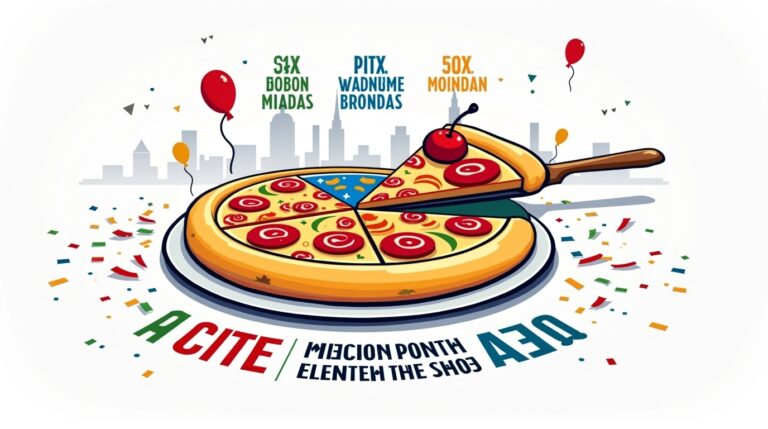The Psychological and Social Impacts of Fictitious Narratives
Introduction
The Psychological and Social Impacts of Fictitious Narratives. In today’s media-saturated environment, television and cinema have evolved beyond mere entertainment platforms to become powerful cultural storytellers. They shape not only how people view the world, but also how they interpret human relationships, personal roles, and even their own identities. The narratives woven into serial dramas, films, and streaming content offer more than plots and characters—they subtly embed social scripts, emotional cues, and behavioural expectations into the viewer’s mind.
Unlike traditional learning environments, where guidance is deliberate and contextual, media operate in the background of daily life, influencing audiences without explicit awareness. This effect is particularly potent because visual storytelling combines emotional engagement with repeated exposure, making the portrayed behaviours and lifestyles seem both familiar and normal. Over time, these fictional portrayals can influence how people expect others to behave—such as imagining a real-life mother to be as selfless, patient, and perpetually cheerful as her on-screen counterpart—and, just as significantly, how they behave, sometimes adopting speech patterns, attitudes, or exaggerated abilities lifted directly from fictional characters. https://mrpo.pk/the-power-of-words/
This study examines the mechanisms by which prolonged exposure to television and cinematic narratives can reshape interpersonal expectations, alter self-perception, and create mismatches between media ideals and real-world realities. It also explores strategies for building awareness and resilience against these subtle yet pervasive influences.
2. Scope of the Study
The research explores:
- The psychological and behavioural impact of prolonged media consumption via social learning, cultivation, and role schema internalisation.
- How fictional portrayals of roles (e.g., mothers, parents, partners) inform real-world expectations and strain relationships.
- Evidence-based strategies for safeguarding viewers—especially frequent TV viewers—from adopting fictional norms as real ones.
3. Theoretical Foundations
- Social Learning Theory (Bandura): Viewers learn and mimic behaviours seen repeatedly, accepting them as normative.
- Cultivation Theory (Gerbner): Heavy media exposure gradually reshapes viewers’ perception of reality, aligning it with recurring TV ideals.
- Role Schema Theory: Internalised media portrayals become default behavioural expectations, often clashing with real human complexity.
4. Discussion
4.1 Positive Effects of Media Engagement
- Enriches cultural awareness and empathy.
- Offers emotional release, ethical reflection, and shared communal experiences.
4.2 Negative Effects of Excessive Consumption
Distorted Reality Perceptions:
Heavy television viewers often develop skewed beliefs about the nature and frequency of events in the real world, unconsciously aligning their perceptions with the recurring themes emphasised on screen. For example, frequent exposure to crime dramas can lead to an exaggerated sense of danger and higher estimates of crime rates, a phenomenon known as the “mean world syndrome.” Similarly, repeated portrayals of luxury lifestyles, effortless success, or perfect family dynamics can create inflated expectations about wealth, career achievement, and relationships. These distorted perceptions can influence decision-making, erode contentment with one’s own circumstances, and shape unrealistic benchmarks for personal and social success. Because such impressions are formed gradually through consistent exposure, viewers may be unaware of the shift in their worldview unless they actively compare media representations with factual data and diverse real-life experiences.
Health Misperceptions:
Media portrayals can significantly influence how audiences—especially adolescents—perceive health-related behaviours and risks. When television and films repeatedly depict drinking, smoking, or excessive fast-food consumption as normal, glamorous, or consequence-free, young viewers may downplay the associated dangers. This can lead to a distorted sense of prevalence (“everyone is doing it”) and a reduced perception of harm, making risky behaviours appear socially acceptable or even desirable. Moreover, such portrayals often omit realistic outcomes—such as long-term health problems, financial costs, or the impact on relationships—creating an incomplete and misleading health narrative. Over time, these skewed impressions can influence dietary choices, attitudes toward substance use, and even willingness to seek preventive healthcare. Without counterbalancing information from education, family, or credible media, entertainment-driven images can become a primary source of “health knowledge,” shaping habits in ways that may be difficult to reverse.
Stereotyped Gender Roles:
Television and film frequently reinforce outdated gender norms by repeatedly presenting men and women in narrowly defined roles. Mothers are often shown as passive caregivers whose identities revolve entirely around domestic duties, while women in general are depicted as overly emotional, dependent on male guidance, or valued primarily for their appearance. Men, on the other hand, are frequently cast as decisive leaders, protectors, or breadwinners—roles that suggest dominance and emotional restraint as the masculine ideal. These portrayals not only ignore the diversity and complexity of real human behaviour but also create unrealistic templates that viewers may adopt as benchmarks for their own lives and relationships. Over time, such patterns can limit aspirations, shape career choices, and subtly influence how people perceive each other’s worth and capabilities. By presenting gender in such fixed and simplified ways, media content perpetuates stereotypes that hinder progress toward more balanced, equitable, and authentic social roles.
Media-Induced Role Expectations (Key Insight):
Unrealistic depictions—such as the ever-patient, flawlessly composed TV mother—set impossible standards that can be psychologically burdensome. Research by the Geena Davis Institute, supported by Meghan Markle’s Archewell Foundation, reveals that television mothers are overwhelmingly shown as young, white, slender, financially comfortable, and able to manage family responsibilities with effortless grace and constant emotional availability. These portrayals rarely include the exhaustion, financial pressures, interpersonal conflicts, and personal sacrifices that real mothers face daily. As a result, audiences—especially women—may internalise these selective images as the “correct” benchmark for maternal success. For mothers, this can breed feelings of guilt, inadequacy, or failure when their lived reality doesn’t match the idealised version. For others, it can foster unfair judgments or criticism toward real women who do not conform to such scripted perfection. This phenomenon aligns with culture-wide cultivation effects, where repeated fictional patterns gradually overwrite nuanced real-world perceptions, creating norms and expectations that persist unless deliberately challenged through personal experience, diverse media representation, or critical awareness.

Adoption of On-Screen Traits in Real Life:
Beyond shaping expectations of others, media characters often serve as behavioural templates that viewers consciously or subconsciously emulate. This imitation can be positive—such as adopting resilience, empathy, or problem-solving skills—or negative, such as embracing aggression, materialism, or manipulative behaviour. However, there is also an ambiguous space where individuals begin acting in ways that are not genuinely their own—borrowing a character’s speech patterns, mannerisms, or exaggerated abilities and presenting them as personal traits. Such “performed identities” may temporarily boost confidence or social appeal, but they risk creating internal dissonance, unrealistic self-presentation, and eventual disappointment when the gap between the adopted persona and one’s authentic self becomes evident. This underscores the dual role of media in setting relational expectations and actively reshaping individual self-expression—sometimes at the cost of personal authenticity.
Parasocial Relationship Reinforcement:
Parasocial relationships—one-sided emotional bonds that viewers form with media personalities or fictional characters—can be powerful enough to influence both perceptions and behaviour. When audiences spend substantial time following a character’s journey, they may begin to feel a sense of intimacy, trust, and familiarity, despite no real interaction taking place. This perceived closeness can lead viewers to adopt the character’s attitudes, communication style, or moral compass as reference points for their own relationships. In some cases, they also project the qualities of these fictional figures onto people in their real lives, expecting similar patterns of care, loyalty, humour, or even conflict resolution. Over time, this blending of fictional and real-life expectations can either enhance interpersonal dynamics—if the traits are constructive—or create tension and dissatisfaction when reality fails to match the idealized media-based image.
Distorted Parental Archetypes in Popular Media:
A striking example in Pakistani society is the reshaping of parental roles influenced by dramas, novels, and movies. In many fictional narratives, the father is portrayed as a strict, emotionally distant figure—quick to scold or punish—while the mother emerges as the sole compassionate ally of the children, shielding them from all discipline. Over time, this “buffer mother” archetype has seeped into real households. Some mothers, consciously or unconsciously, model themselves on these portrayals, undermining the father’s role and overprotecting children to the point of fostering entitlement, poor resilience, and a lack of respect for parental boundaries.
5. Conclusion
Television and cinema occupy a central place in modern cultural life, providing shared narratives and emotional experiences that connect audiences across boundaries. Yet their influence extends far beyond entertainment. The repeated exposure to idealised characters, unrealistic lifestyles, and simplified social dynamics can subtly redefine what viewers expect from others and themselves. These shifts—whether in the form of distorted reality perceptions, health misjudgements, stereotyped gender roles, or borrowed identities—can have lasting effects on relationships, self-image, and societal norms.
The challenge lies in recognising that the media is not a passive mirror of reality but an active constructor of it. By becoming aware of its persuasive power, audiences can learn to separate fiction from fact, appreciating the value of storytelling while guarding against the internalisation of unrealistic or inauthentic standards. Encouraging critical media literacy, promoting diverse and authentic portrayals, and fostering open discussions about media messages are vital steps toward ensuring that entertainment enriches rather than distorts our understanding of ourselves and the people around us.
While television and related media can entertain and inform, their consistent reinforcement of skewed roles—whether in gender dynamics, health perceptions, or family hierarchies—can subtly but deeply distort social expectations. The case of the “buffer mother” in Pakistani households is a reminder that fictional tropes do not remain on screen; they migrate into our homes and habits. Recognising these patterns is not about rejecting media altogether, but about reclaiming our agency to filter, question, and redefine the values we absorb. Only then can the media serve as a tool for cultural growth rather than quiet erosion.
6. Recommendations
- Media Literacy Education:
Integrate structured curricula—especially in schools and youth programs—that not only teach audiences to question and contextualise fictional role depictions but also help them recognise when they are unconsciously adopting inauthentic behaviours or exaggerated traits from media. Incorporate curriculum that teaches audiences—especially youth and parents—to question and contextualise fictional role depictions, including common family stereotypes like the “tyrant father” and “over-sympathetic mother.” - Balanced Viewing Habits:
Limit binge-watching and schedule intentional viewing. Balance screen time with offline activities that promote authentic self-expression, real-world skill-building, and healthy social interaction. - Realistic Media Representation:
Advocate for more diverse and authentic portrayals in television and film—featuring characters with varied body types, ethnicities, life circumstances, and imperfections that reflect real human complexity. This includes showcasing mothers and fathers who face genuine challenges, juggle competing priorities, and experience moments of both success and failure. - Family and Social Reflection:
After viewing, engage in open discussions—both at home and in community settings—about whether the depiction reflects real life, and how it compares to personal experiences. Use these conversations to identify unrealistic portrayals and reinforce balanced perspectives. - Active vs. Passive Viewing:
Encourage viewers to consume media actively—pausing to question plotlines, character decisions, and contrast with real-life expectations, particularly regarding parental roles and the balance between discipline and affection. Compare these with factual information, diverse narratives, and lived experiences to prevent uncritical acceptance. - Awareness of Parasocial Influence:
Educate audiences about parasocial relationships, explaining how emotional attachment to fictional characters can affect real-life expectations and even personal identity. Promote awareness so that admiration remains inspiration—not imitation that compromises authenticity.


